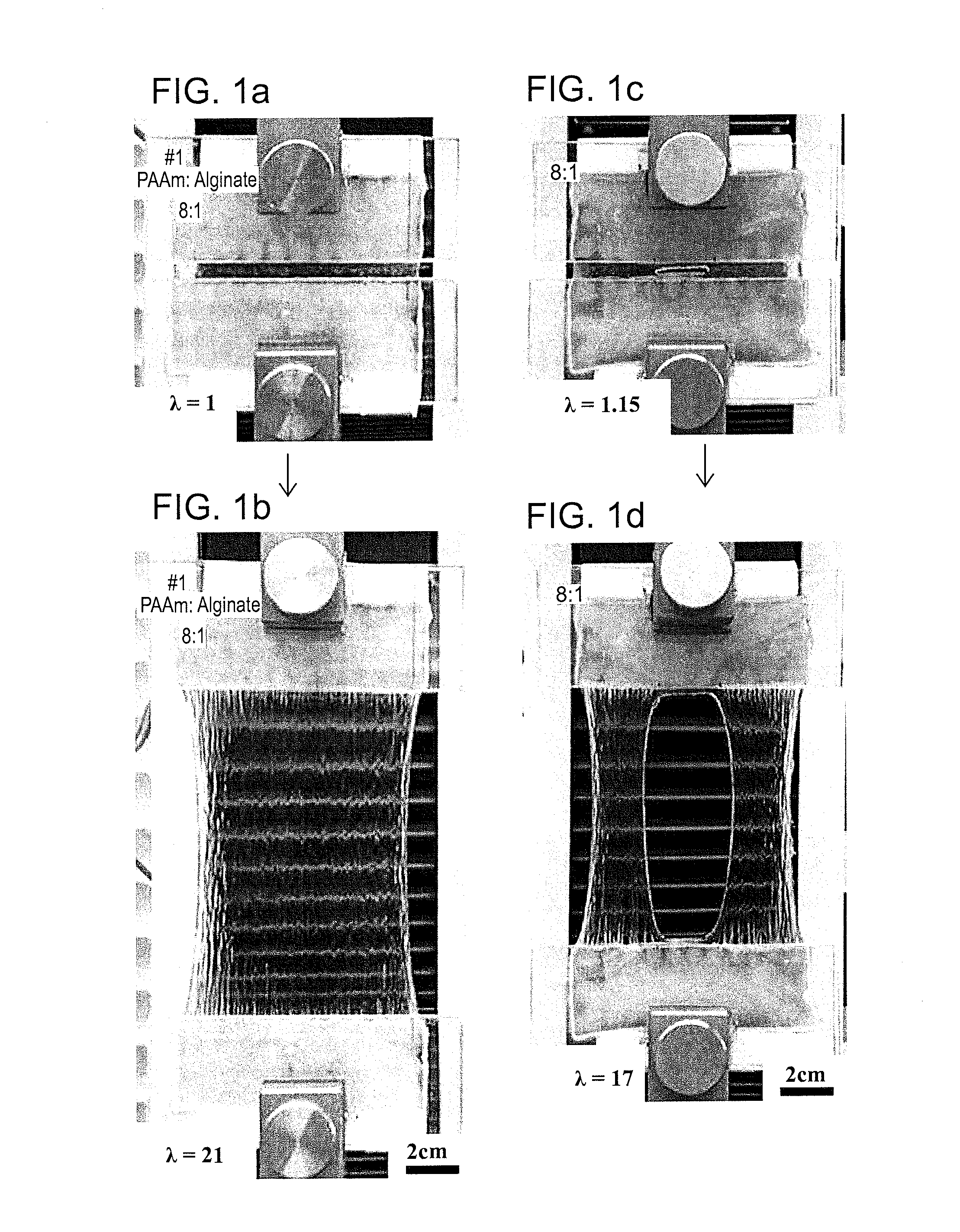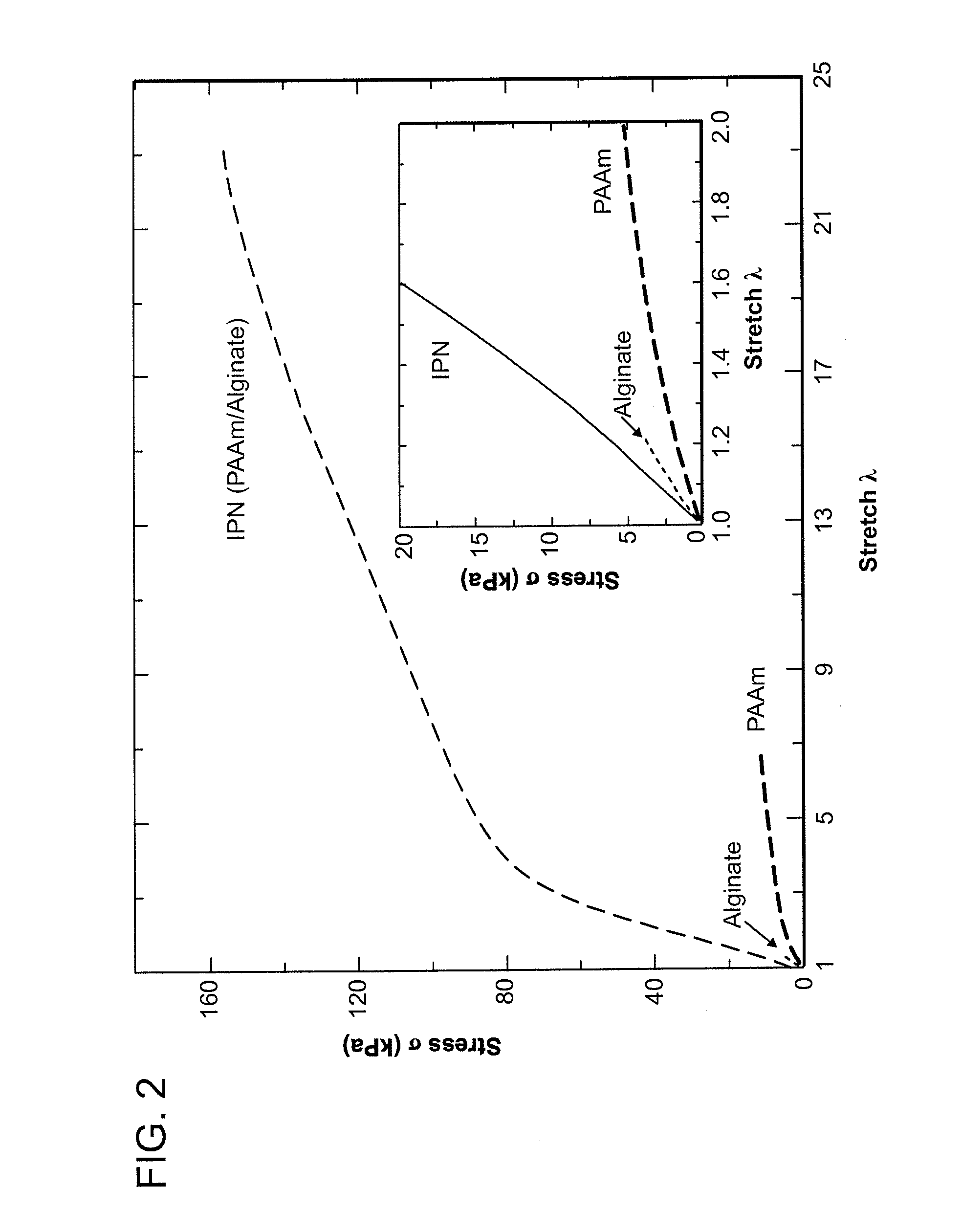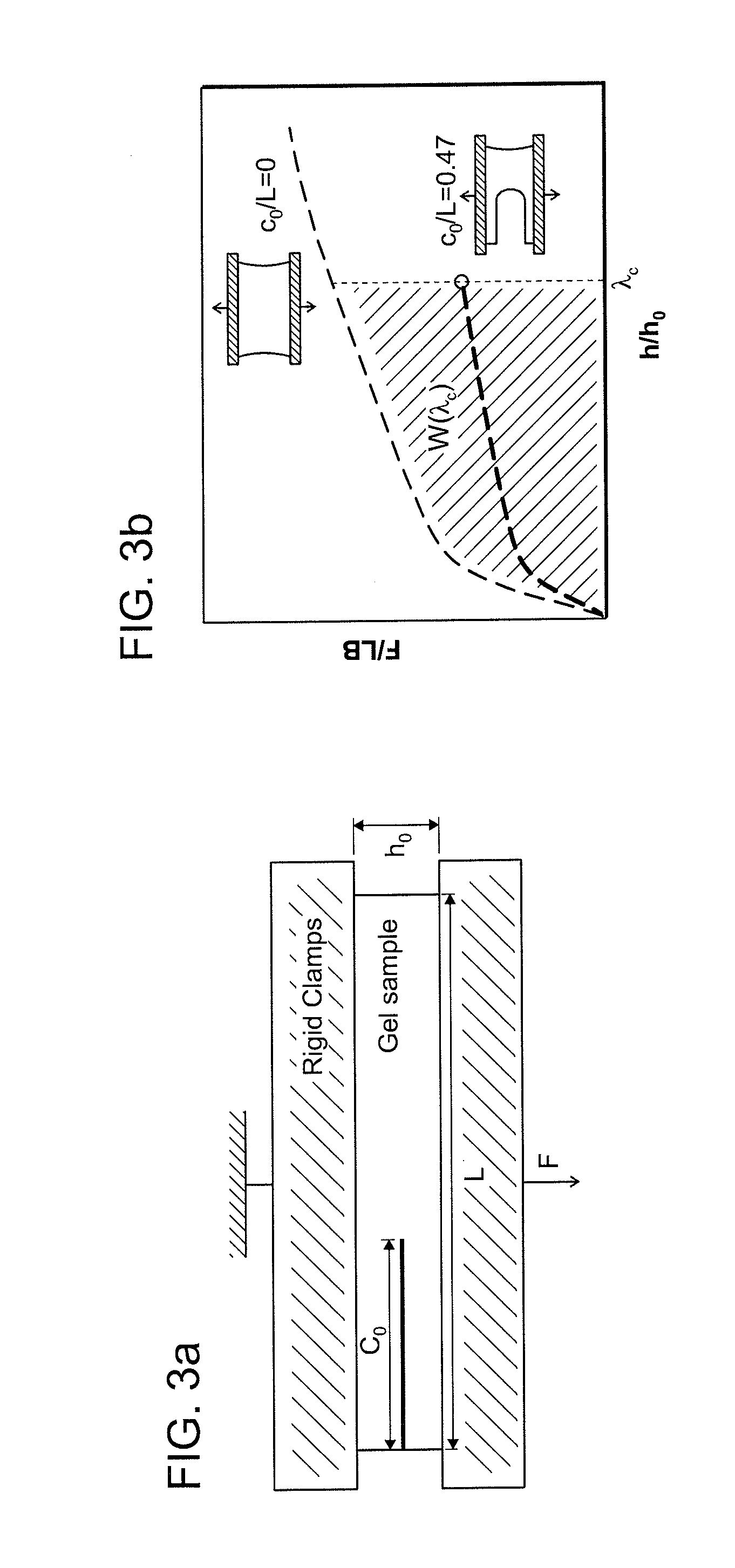Interpenetrating Networks With Covalent and Ionic Crosslinks
a technology of interpenetrating networks and crosslinks, applied in the field of hydrogels, can solve problems such as limited applications where mechanical properties are applied
- Summary
- Abstract
- Description
- Claims
- Application Information
AI Technical Summary
Benefits of technology
Problems solved by technology
Method used
Image
Examples
example 1
Manufacture of IPN Hydrogel Compositions
[0074]The following materials and methods were used to make and test the improved hydrogel compositions.
[0075]Materials
[0076]Acrylamide (AAm; Sigma, A8887) and alginate (FMC Biopolymer, LF 20 / 40) were used as the base materials of the network. N,N-methylenebisacrylamide (MBAA; Sigma, M7279) was used as the cross-linking agent for AAm gel. Ammonium persulfate (AP; Sigma, A9164), N,N,N′,N′-tetramethylethylenediamine (TEMED; Sigma, T7024) were used as the photo initiator and accelerator for the ultraviolet (UV) gelation reactions, respectively. Calcium sulfate slurry (CaSO4.2H2O; Sigma, 31221) was used as the ionic crosslinker for alginate gel. All materials were used as received.
[0077]The interpenetrating network (IPN) gels were prepared by dissolving alginate and AAm monomer powders in deionized water. The water concentration
(waterwt.(alginate+AAm+water)wt.×100)
was fixed as 88.6 wt.-% throughout the entire experiments, and polyme...
example 2
Characterization of Hydrogel Properties
[0078]Physical and chemical characteristics were evaluated as follows.
Mechanical Tests
[0079]Before the mechanical tests, the surfaces of the hydrogels were dried with N2 gas for 1 minute to remove water from the gel surfaces. Four stiff polystyrene plates were glued with superglue to clamp the gel as shown in FIG. 3(a). At the end, 75.0 (L)×5.0 (h0)×3.0 (t) mm3 size test specimens were prepared for the tests. All mechanical tests were performed at room temperature on a tensile machine (Instron model 3342) with 500 N capacity load cell and nominal stress and stretch were recorded. The stretch rate was kept constant as {acute over (λ)}=2 min−1.
Tensile Test (FIG. 1(a), FIG. 2)
[0080]PAAm-14.05-0.06 / Alginate-1.76-13.28 IPN gel was subjected to tensile test. The pictures for reference and current states of tensile test are shown in FIG. 1(a) to demonstrate the high stretchability of PAAm / Alginate IPN gel. As shown in FIG. 1(a), PAAm / Alginate IPN gel ...
example 3
Highly Stretchable and Tough Hydrogels
[0138]Extremely stretchable and tough hydrogels were made by mixing two types of crosslinked polymers: ionically crosslinked alginate and covalently crosslinked polyacrylamide (FIG. 27). An alginate chain consists of mannuronic acid (M unit) and guluronic acid (G unit), arranged in blocks rich in G units, blocks rich in M units, and blocks of alternating G and M units. In an aqueous solution, the G blocks on different alginate chains form ionic crosslinks through divalent cations (e.g., Ca2+), resulting in a network in water—an alginate hydrogel. By contrast, in a polyacrylamide hydrogel, the polyacrylamide chains form a network by covalent crosslinks. Powders of alginate (FMC Biopolymer, LF 20 / 40) and acrylamide (Sigma, A8887) were dissolved in deionized water. Unless otherwise stated, the water content was fixed at 86 wt %. Ammonium persulfate (AP; Sigma, A9164) was added as a photo initiator for polyacrylamide, and N,N-methylenebisacrylamide ...
PUM
| Property | Measurement | Unit |
|---|---|---|
| Temperature | aaaaa | aaaaa |
| Temperature | aaaaa | aaaaa |
| Temperature | aaaaa | aaaaa |
Abstract
Description
Claims
Application Information
 Login to View More
Login to View More - R&D
- Intellectual Property
- Life Sciences
- Materials
- Tech Scout
- Unparalleled Data Quality
- Higher Quality Content
- 60% Fewer Hallucinations
Browse by: Latest US Patents, China's latest patents, Technical Efficacy Thesaurus, Application Domain, Technology Topic, Popular Technical Reports.
© 2025 PatSnap. All rights reserved.Legal|Privacy policy|Modern Slavery Act Transparency Statement|Sitemap|About US| Contact US: help@patsnap.com



